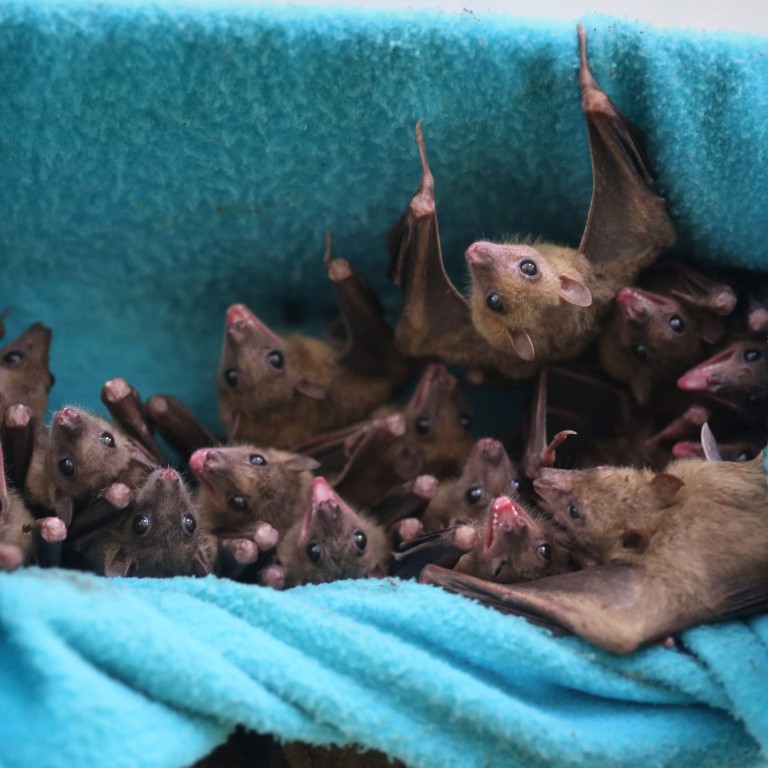
Ebola-like virus found in Chinese bats
- Scientists discover virus with potential to infect humans and animals in southwestern China
- Mengla virus shares many characteristics with deadly Ebola
A new Ebola-related bat-borne virus with the potential to infect humans and animals has been found by a team of Chinese and Singaporean scientists in southwestern China.
The Mengla virus – discovered in a fruit bat caught in Mengla county, Yunnan province – is closely related to the Ebola and Marburg viruses which are capable of causing severe and often fatal bleeding and organ failure in humans, according to the scientists.
Their study, published in the January edition of the online journal Nature Microbiology, confirmed that the new virus could infect cells from monkeys, hamsters, dogs and humans.
Seven of the most deadly viruses, from Ebola to rabies
The team, led by Shi Zhengli from the Chinese Academy of Sciences’ Institute of Virology in Wuhan and Wang Linfa from the Duke-NUS Medical School in Singapore, discovered that the new virus had several important functional similarities with the Ebola and Marburg viruses.

The similarities, which include using the same molecular receptor to gain entry into cells and cause infection, put the new virus into the filovirus family, which is known for causing severe haemorrhagic fever in humans.
“Studying the genetic diversity and geographic distribution of bat-borne filoviruses is very important for risk assessment and outbreak prevention, as this type of infectious disease can affect the general public without warning and with devastating consequences,” Wang said.
Airborne Ebola: new species of killer virus is discovered in bats
At present, the Mengla virus has only been identified in populations of Rousettus bats in China, and further tests will be conducted to assess the risk of the virus spreading to other species.
The Ebola virus was first discovered in 1976 and can be spread through contact with bodily fluids or blood from infected people or animals.
DR Congo, ravaged by Ebola and war, is the ‘most neglected crisis’ of 2018
The average fatality rate for Ebola is around 50 per cent, and case fatality rates have varied from 25 per cent to 90 per cent in past outbreaks, according to the World Health Organisation.
In the most widespread outbreak of Ebola, more than 11,000 people in Liberia, Guinea and Sierra Leone in West Africa were killed by the virus in 2014.
The Marburg virus belongs to the same family as the Ebola virus and was identified after two outbreaks occurred simultaneously in Germany and Serbia in 1967.

